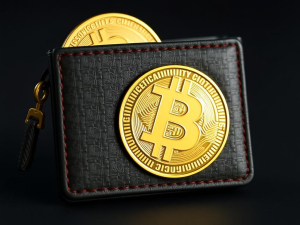
To ensure the safety of your cryptocurrency assets, prioritize the secure management of your seed phrase. This critical element acts as a gateway to your digital wallet, allowing access and recovery in case of loss or theft. Store it offline in a physically secure location, such as a safe or a safety deposit box, to mitigate risks associated with online threats.
Backup your seed phrase by creating multiple copies and diversifying their storage. Avoid keeping all copies in one place; instead, distribute them across trusted family members or locations. Additionally, consider using encryption methods for any digital backups to enhance privacy. Always be cautious about sharing this information; unnecessary disclosure can lead to unauthorized access.
The protection of your seed phrase is paramount for maintaining the integrity of your investments. Regularly review and update your security practices to adapt to emerging threats. A proactive approach will not only safeguard your assets but also provide peace of mind in managing your crypto portfolio.
Store Seed Phrase Offline
For maximum security, store your seed phrase offline. This method eliminates risks associated with online breaches and hacking attempts.
Consider the following options for secure offline storage:
This offline approach enhances privacy and provides robust protection against unauthorized access. Always create backups of your stored seed phrases and manage them carefully to facilitate recovery in case of loss. Regularly check the integrity of your backup methods to ensure continued security.
Use Hardware Wallets Safely
To ensure the highest level of security for your cryptocurrency holdings, utilize hardware wallets with the following practices:
- Secure Access: Always connect your hardware wallet to trusted devices. Avoid public or shared computers to prevent unauthorized access.
- Update Firmware Regularly: Manufacturers release updates to enhance security features. Regularly check for and apply firmware updates to maintain protection against vulnerabilities.
- Manage Recovery Seeds Wisely: When setting up a hardware wallet, generate a recovery seed in a secure environment. Store it offline in multiple secure locations to ensure recovery in case of device loss.
- Use Encryption: If your hardware wallet supports encryption, enable it. This adds an additional layer of security for stored private keys and sensitive data.
- Verify Transactions: Always double-check transaction details on the hardware wallet display before confirming any actions. This prevents potential phishing attacks that may occur through compromised software interfaces.
- Avoid Third-Party Software: Do not rely on third-party applications for wallet management unless they are explicitly recommended by the hardware wallet manufacturer. Stick to official interfaces to reduce risks.
Your privacy and security depend on how diligently you manage your hardware wallet. Follow these recommendations for optimal safety in cryptocurrency storage and transactions.
Create Strong Backups
Utilize multiple backup methods to ensure the safety of your seed phrase. Create at least three copies, storing them in different physical locations to mitigate risks associated with theft or natural disasters.
Employ encryption techniques for added security. Use strong encryption algorithms to protect digital backups, ensuring that unauthorized access is prevented. This adds an extra layer of privacy during storage and recovery processes.
Choose durable materials for physical backups. Write your seed phrase on fireproof and waterproof materials, such as metal or specialized paper designed for longevity. This protects against environmental hazards that could compromise your backup.
Implement a systematic management approach for access control. Limit who can access your backups, and regularly review their locations and conditions. Consider using secure storage solutions like safety deposit boxes for offline backups.
Regularly test your recovery process to confirm functionality. Ensure you can successfully retrieve your wallet using the backups without any issues. This practice not only enhances security but also boosts confidence in your recovery plans.
Avoid Phishing Scams
Always verify the authenticity of communications regarding your crypto assets. Check URLs and email addresses meticulously; phishing attempts often masquerade as legitimate sources. Use bookmarks for frequently accessed sites to prevent misdirection.
Enable two-factor authentication (2FA) wherever possible to add an extra layer of protection against unauthorized access. Applications like Google Authenticator or Authy are preferable over SMS-based 2FA due to their enhanced security.
Be cautious with unsolicited messages that request sensitive information. Legitimate services will never ask for your seed phrase, password, or private keys via email or message. Educate yourself on common phishing tactics to recognize them quickly.
Utilize email filtering options to reduce the risk of phishing emails reaching your inbox. Regularly update your passwords and employ unique credentials across different platforms for improved privacy and safety in management practices.
Consider using a dedicated device for crypto transactions, minimizing exposure to malware that may compromise security and recovery efforts. Keep software updated to benefit from the latest encryption standards and protection measures against vulnerabilities.
Regularly Update Security Practices
Implement multi-factor authentication (MFA) for accessing your crypto accounts. This adds a layer of protection beyond just passwords, significantly enhancing security through additional verification methods.
Review and update encryption protocols used for wallet management periodically. Ensure that the latest encryption standards are adopted to safeguard data during storage and transmission, minimizing vulnerabilities.
Monitor access logs for unusual activities in your accounts. Set alerts for any unauthorized attempts, which can prompt immediate action and enhance overall privacy and security.
Educate yourself on emerging threats in the cryptocurrency space. Stay informed about new phishing tactics or malware targeting wallets to proactively adjust your defenses against potential breaches.
Conduct regular audits of all backup solutions. Ensure backups are stored securely and are accessible only by you or trusted individuals, reinforcing recovery options in case of loss or theft.
Utilize secure storage solutions that offer robust management features. Opt for platforms that provide advanced security features such as biometric access or hardware-based encryption to protect your assets more effectively.
Schedule routine reviews of your digital asset strategies. Reassess risk management practices to ensure they align with current market conditions and personal financial goals, adjusting security measures as necessary.

You can be the first!